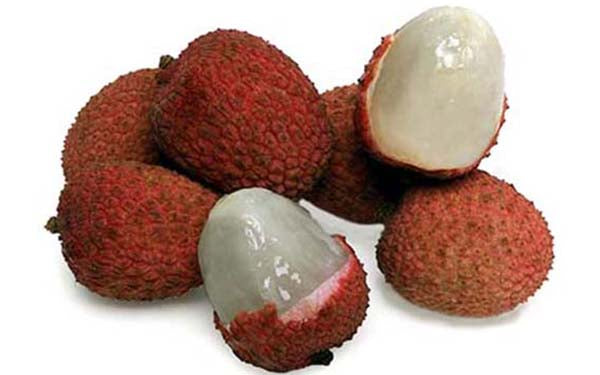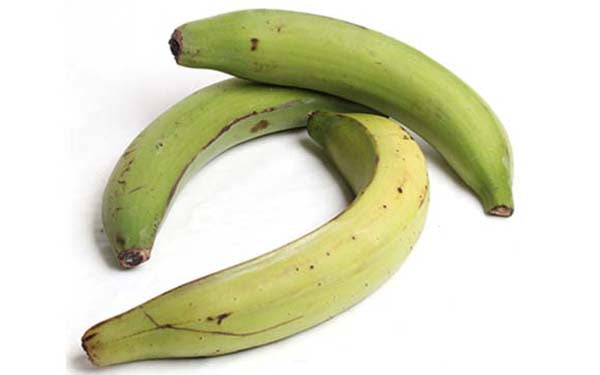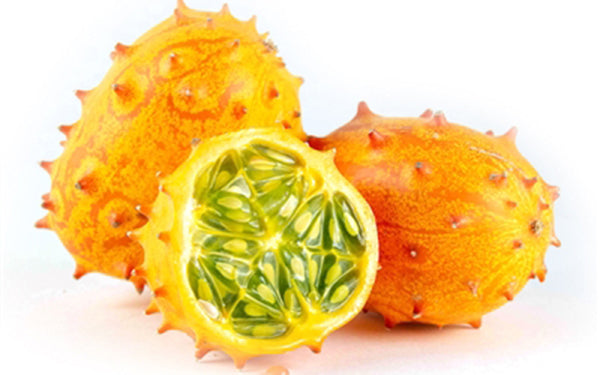May is for Tantalizing Tropicals and More!

Pixie Tangerines
Pixie Tangerines are exceptionally sweet tangerines. They are a hybrid of King and Dancy tangerines. Pixies are not only sweet and delicious, but they are also seedless and have very low acidity. They are delicious when juiced or simply eaten out of hand. Pixies were once considered a backyard fruit, only grown in small gardens and local areas of California; they were not commercially grown. Because of their great taste, they have grown in popularity and are available from Melissa’s beginning in March.
Like most tangerines, they are an excellent vitamin C source and contain potassium, vitamin A, and folic acid. They can be stored in the refrigerator for 1-2 weeks but are best when eaten immediately.

Cherimoyas
Also called Custard Apple or Custard Fruit, this delicious heart-shaped fruit is a delicacy in the exotic fruit category. This fruit is hand-pollinated, which makes them a time-consuming commercial crop. The flesh of the cherimoya is cream-colored with large, black, inedible seeds. They have a flavor that is a subtle blend of strawberry, mango and pineapple. To enjoy, simply cut into wedges and spoon out the creamy flesh while discarding the seeds. Cherimoya is generally eaten as is, but it can also be used in drinks, fruit salads or desserts.
Cherimoyas should be kept at room temperature until ready to eat and stored in the refrigerator for a few days after ripening.
Cherimoyas contain about 94 calories per 3 ½ ounce serving. They are also a good source of vitamin B and fiber.

South African Baby Pineapples
South Africa is noted for these baby pineapples, also known as Queen Victoria’s, because they thrive in the hot and humid climate. Baby pineapples have a bold, sweet, rich flavor. South African baby pineapple flesh is entirely edible, including the core. Their size averages about 4.5 inches high and 3.5 inches in diameter, making one pineapple a perfect single-serving. Perfect for a delicious treat when you slice the outer rind off, wrap the crown in a paper towel, and then serve like a popsicle. 
Asian Pears
Asian pears, also known as apple pears, taste very similar to a pear but resemble an apple, which is where their name is derived. There are hundreds of varieties of Asian pears available today, making them available just about all year-round. They are delicious eaten out-of-hand and are firm and crunchy with plenty of sweet juice. They are great on fruit platters, salads, pies or desserts, or wherever you may use an apple.
Most Asian pears will last about 30 days when refrigerated, but it is always best to eat as soon as possible. Store them in the refrigerator, wrapped carefully, so they will not bruise. Most are handpicked and individually wrapped to prevent any bruising in shipping.
Asian pears are a good source of vitamin B and potassium. They are also low in calories (about 44 per 3 ounces), making them the perfect snack.

Tree-Ripened Mangoes
Tree-Ripened Mangoes stay on the tree longer, allowing them to flavor up. They have red, orange, and yellow colorations and are ready-to-eat! These large, plump, juicy fruits have buttery soft, yellow-orange flesh, making for exceptional eating. Mangoes are one of the most popular fruits worldwide. They are great for desserts, salsas, fruit platters and just snacking.

Passion Fruit
Passion Fruit originated in South America, most likely in Brazil. Now, it is grown worldwide. The fruit comes from the passion flower, which is a beautiful tropical flower with a wonderful fragrance. Passion fruit is generally purple but can also be golden and has a jelly-like golden flesh, filled with soft, edible seeds. Passion fruit is round or egg-shaped, with a thick, hard shell that gets wrinkled as it ripens. Passion Fruit is generally eaten fresh but may be cooked for use in sauces and fillings. Simply halve the fruit and scoop out the pulp and seeds with a spoon.
Passion fruit can be purchased with smooth skin for later use or with wrinkled, dimpled skin for immediate use. The more wrinkles, the better it will taste! It is best stored at room temperature. Passion fruit is very low-calorie, with about 18 calories per medium fruit and contains vitamins A and C.

Kumquats
Originally introduced in the mid-19th century to the U.S., this ancient fruit has been familiar in Japan and China for thousands of years. These tiny citruses are entirely edible. The sweet, thin rind offsets the tart flesh. They are great as a snack and delicious when candied. Kumquats are generally available year-round.
Kumquats are best kept refrigerated. They should have bright skin with no blemishes. They have about 50 calories in a 3½-ounce serving. They are also an excellent source of vitamin C.

Quince
Quince is an ancient fruit, possibly dating back to the Garden of Eden. Some biblical historians believe this was actually the apple in the story of Adam and Eve. Also known as the “golden apple,” it is believed to symbolize love and happiness. Quince was brought to the United States in the 17th century, although they are still grown worldwide. Quince are fruits that should always be eaten cooked, never raw. The raw fruit is bitter and undesirable to eat. Generally, quince are used for sauces, jams, or preserves. They are baked or even stewed, as they stay firm even when cooked for a long time.
Quince is a good source of vitamin C; it is low in calories (about 53 per medium fruit) and a good source of minerals. Store quince in the refrigerator, carefully wrapped, as they bruise easily.

Lychees
Lychees are round, beautiful, rosy red or green colored fruits, about 1 to 2-inches round, encased in a thin, bumpy shell. They are sometimes referred to as “Chinese Cherries.” Lychees are considered good luck fruit and are often given as gifts during Chinese New Year. The inside resembles a peeled grape, and the taste is phenomenal! Lychees have a sweet perfume and a flavor reminiscent of a mixture of honey, strawberries and Muscat grapes.
Lychees also have a large, inedible seed, so use caution when eating them. To eat lychee, just crack the shell gently with your thumbnail just below the stem. Peel away the shell and pop the lychee into your mouth, making sure to spit out the seed. Lychees are delicious as a snack, in fruit salads, as a garnish or in stir-fries. They are best when eaten immediately after purchase but can be stored in the refrigerator for a few days. Store them in a plastic bag with a paper towel to absorb any excess moisture. Lychees are low in calories and have very little fat. They are a good source of potassium and an excellent source of vitamin C.

Baby Bananas
Also called niño, ladyfinger, or finger bananas, baby bananas are much smaller than the popular Cavendish banana and are a bit sweeter. They are native to tropical regions like Central and South America, the Caribbean and Mexico. Familiar in Latin American, African and Asian cooking, baby bananas are amazingly versatile. This small, crunchy specialty banana is usually eaten out of hand or sliced raw in fruit salads. Did you know… that the banana is considered an almost perfect food? The banana is very low in sodium, high in potassium, and contains approximately six vitamins and 11 other minerals.

Burro Bananas
The shape of this banana is flatter, smaller and squarer, yet just as versatile as other bananas. The burro banana is described as having a tangy, lemony flavor. Once ripe, the soft flesh is creamy white or yellow with some firmness toward the center. When firm, the burro banana can be sliced and added to cereals or made into banana chips. The burro softened can also be mashed and used in cake and other dessert recipes.

Plantain Bananas
Larger and firmer than dessert bananas, plantains are commonly used as vegetables rather than fruits because of their low sugar content. Extremely popular in Latin American countries, plantains are also favored in West Indian and African cooking. Plantains are rarely eaten raw unless completely black to ensure ripeness and are usually baked or fried and served like a potato. These “cooking bananas” have a mild, starchy flavor and are used in a wide range of savory dishes.

Persimmons
Once native to China and Japan, Persimmons, also known as kaki fruit or Sharon fruit, are now widely grown for commercial use. Generally eaten fresh, cooked or candied, the most common variety of Persimmon is called the Hachiya. Large and round with a pointy base, the Hachiya Persimmon is easy to distinguish from its smaller, flatter, tomato-shaped counterpart called the Fuyu. The Fuyu can be eaten firm or soft. The Hachiya, when completely ripe, is soft, creamy and very sweet.

Kiwano Melons
Once grown only in New Zealand, Melissa’s Kiwano Melons are now grown in California as well. Consumers are drawn to these intriguing yet versatile tropical fruits whose look easily captures attention. The spiky, orange-colored shells encase a soft, succulent bright green flesh. They are mild in flavor and similar in taste to juicy, seed-filled cucumbers. Once peeled, Melissa’s Kiwano Melons can be tossed in fresh fruit salads or served as a garnish with roasted meats.
Kiwano melons last for several weeks without refrigeration from their initial picking. Once they “give” to the touch, they are ripe and ready to eat. Do not store them near apples or bananas, as these fruits will shorten their shelf life. They are low in calories, with only 24 calories in a 3 ½-ounce serving and contain more potassium than a banana. They are also high in vitamin C.

